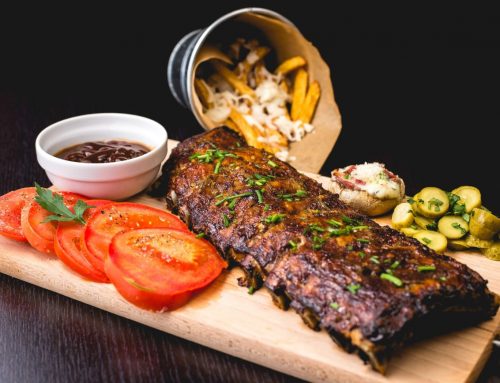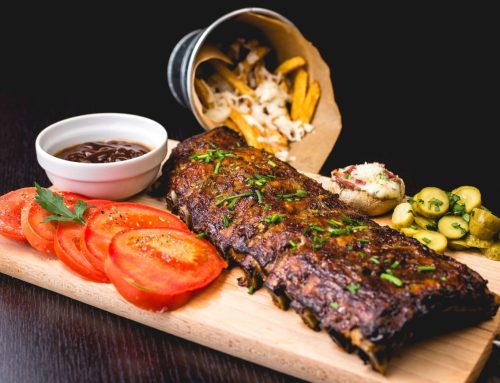This summer travel will be radically unlike what we’ve done in years past. But with temperatures rising, and national parks and theme parks slowly reopening, there’s a glimmer of hope in the air. We might not be able to do that annual Europe trip or get the whole extended family together overseas, but there is still plenty to look forward to.
If these past few months have taught us anything, it’s that with a little creativity and a lot of pent-up energy, even the smallest of journeys can be thrilling. Biking one neighborhood over can be a revelation. Even a day hike promises new sights and sounds. Our backyards and balconies, tired as we may be of them, present new possibilities in the light of summer—from barbecuing to creating a beach day away from the crowds. Over the coming months, we’ll likely inch a little further afield, too, as some forms of entertainment and escape are back on the table, from drive-ins to private cabins in secluded destinations, and more.
Below, our editors on how we’ll travel this summer—and why we’re looking forward to it.
We’re investing in bikes
After years of living in Brooklyn and fantasizing about owning a bike, it only took a global pandemic to shock me into buying one. I have not looked back. With strict lockdown rules still in place and public transport off the table for non-essential workers, bikes have become both a source of exercise and the only real means of getting around. Finally, weekend activities are no longer confined to walking distance.
It’s no wonder, then, that cities around the world are considering expanding their bike lanes—an efficient way to simultaneously cut down on pollution and create more outdoor space for social distancing as the world begins to reopen. Milan, for example, is looking to introduce 22 miles of bike lanes this summer; Paris’s mayor Anne Hidalgo has proposed introducing bike paths that connect the center of the capital to the suburbs to help residents avoid riding the Metro. In the U.S., cities like Oakland and New York are temporarily closing streets to traffic, opening up previously busy roads to cyclists and pedestrians—just last week, the latter promised to add another 12 miles of open streets and introduce an additional 9 miles of bike lanes.
And while my own bike purchase felt a little quarantine-impulsive at the time, it seems I wasn’t the only person to make the leap. According to Bloomberg, bike shops across the U.S. have seen an overwhelming surge in demand, with some reporting as much as 300 percent growth since the pandemic began. Here’s hoping our newfound cycling obsession continues long after life returns to normal. —Lale Arikoglu
The return of the drive-in
By some estimates, there are just over 300 drive-in theaters left in the United States—a fraction of the thousands in operation in the 1950s. But if the past few weeks are any indication, 2020 is set to be the summer of the drive-in. From California to Texas to the tristate area, drive-in theaters have been selling out since many reopened this month. And no wonder: Standard movie theaters remain closed in many states, but drive-ins have been among the first businesses to open back up, drawing those looking to get out of the house while maintaining distance from others. In the privacy of your own car, the drive-in theater promises just that—plus a little (distanced) human interaction.
Some of these drive-ins are old classics, like Warwick Drive-Ins in New York, which has been in business since the ‘50s and just reopened with three screens and nightly showings (barbecues are also allowed). Newer, now-open theaters include Coyote Drive-In in Fort Worth, Texas (founded in 2011), and Mission Tiki in Montclair, California (founded in 1956, but fully refurbished in ‘06). There’s way more to the experience than popcorn and a show: Coyote has a dinner menu and full bar; Mission Tiki serves meals like carne asada nachos at its nightly showings. Other theaters, like the drive-in recently sprouted in the parking lot of Bel Aire Diner in Queens, New York, are operated as pop-ups—something we can no doubt expect to see more of this season. There will likely be a repurposing of the drive-in model for other types of events, like music festivals; its cousin, the drive-through, has also become a means of entertainment during the pandemic, for everything from Portland’s strip clubs to Six Flags’ safari attractions.
You’ll have to keep your mask on and social distance in line for the bathroom, but after months of streaming at home, the idea of sitting outside in the hot summer air, barbecue smoke floating past, is a whiff of normalcy we can all look forward to. Just prepare to book those movie nights well in advance—you won’t be the only one planning on it. —Megan Spurrell
Even small trips will feel like an adventure
Car trips are as low-risk as it gets for our return to travel. A drive to take a nearby hiking trail, for instance, feels feasible if you can avoid tight paths that require bypassing others. And weekend trips to see nearby friends and family will, slowly, start to make sense as small groups are able to gather again.
“More and more, people are deciding to get back in their cars and go places,” says Matt Clement of Arrivalist, a location data company that provides insights to the travel industry. “The trends are very clear.” Arrivalist’s Daily Travel Index measures automobile trips that exceed 50 miles or more. Nationwide, they’ve seen a 48.2 percent increase since early April.
How far we’re willing to travel—and where we’ll go—will vary tremendously regionally. “In places that haven’t been hit as hard, there might be a quicker return to longer road trips and a higher comfort level than other parts of the country,” Clement says. In a Condé Nast Traveler online study, 42 percent of responders said they would drive up to six hours from home for a trip. Forty-one percent said they would consider driving more than seven hours, and 23 percent felt that way about a 10-plus-hour trip. For those in harder-hit regions, shorter car trips—with added precautions like minimizing your drive time to avoid rest stops, sit-down meal breaks, and other public facilities—may be the norm for some time.
“In the Northeast, it makes sense to focus on the traditional day trip markets and convert those folks into overnighters,” says Clement. “But in Florida, everyone is waiting to see Disney’s and Universal’s decisions about reopening theme parks. They feel like once that happens, people will get on an airplane to go to Disney.”
For now, all eyes are Memorial Day weekend: “That will be the ultimate barometer for the first couple of summer months,” says Clement. “We’re talking more about the speed of recovery, the speed of people getting into their cars and going on trips, rather than whether they will. They definitely will.” —Stephanie Wu
A cabin getaway that ensures privacy
As the pandemic spread, so did short-term rental cancellations, with Airbnb, Homeaway, and VRBO hosts seeing huge swaths of bookings disappear in a number of days. But as travelers itch to get back out there, those same hosts—many with cabins that offer privacy, and enough room for the whole family to spread out—are making it possible to salvage summer vacation plans. In early April, new U.S. Airbnb bookings were down to just 245,000 during their lowest week, a 59 percent drop in new bookings from February, according to AirDNA. But, by mid-May, new bookings were back up to pre-pandemic levels, approaching 600,000 new bookings per week.
The data shows that travelers are looking for a specific kind of Airbnb these days, too: Cabins were the second-most searched listing in the U.S. during May, the company says. Since cabins are traditionally in more remote areas, it makes sense that social distance–conscious travelers would look to more secluded getaways, even if they’re just outside city limits. Beyond home shares, companies like Getaway are tapping in to our need for a mix of the outdoors and solitude, too. The tiny, minimalist cabin rental company, with options for two or four guests, just opened a new outpost in the Brazos Valley, one hour outside of Houston.
Travelers are booking much closer to their trip, preferring a more spontaneous getaway. Before the pandemic, just 30 percent of all Airbnb bookings were made less than a week out from a traveler’s trip. But in late April? Some 60 percent of all bookings were made within that timeframe, says AirDNA. And people are staying longer, too—likely thanks to work from home options that offer location flexibility. Property management software Guesty reports that the average reservation length across Airbnb, Booking.com, and VRBO doubled globally, from four nights to nine.
It seems like a week at a cabin may be in the cards for us all this summer. And we’re not complaining—we do love an A-frame view. —Meredith Carey
The backyard as a blank canvas
The word “staycation” has never been more relevant. Travelers are ready for quintessential summer activities like barbecues and cookouts, picnics, and days by the water (searches for “beach trip packing list” and “beach trip with friends,” for example, soared on Pinterest toward the end of April). The big difference, though, is that those activities may largely take place in our backyards this summer—especially for those living in areas where beaches and parks remain closed, or are too crowded for social distancing.
It makes sense, then, that people are prepping their outdoor spaces for more time spent unwinding at home. Home goods stores are selling out of floats and inflatable pools, and outdoor furniture sales are rising. Local retailers are seeing an increase in grill sales, too, and consumers are skirting around supply chain bottlenecks and meat shortages by getting creative with what’s on the grill: Sophie Mellet-Grinnell, a protein market specialist for Baldor Specialty Foods, says sales are up for plant-based meats, pastured- and grass-fed meats, guinea hens, pheasant, whole duck crowns, and organic pork.
Thankfully, these at-home experiences can still be infused with hints of wherever you’d rather be. Many smaller breweries who previously only shipped locally have expanded their reach, making deliveries from that Michigan cider house or Asheville brewery you love feasible. Restaurants are selling meat, sauces, and other ingredients in bulk, alongside standard take-out offerings, and online retailers like Goldbelly (which has seen order quantities increase by 30 to 40 percent since mid-March) will ship you that pie your family loves to share on the annual Fourth of July trip. Regardless of when reopenings are happening in your city, nearly everything you’d want for a picnic, cookout, or day at the beach is still within reach. —Madison Flager
Source: CNN Traveler





